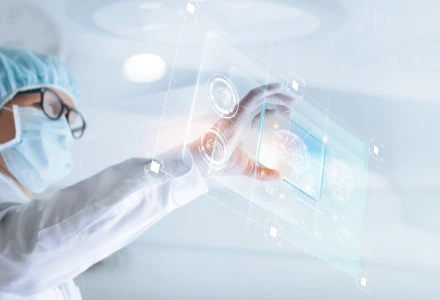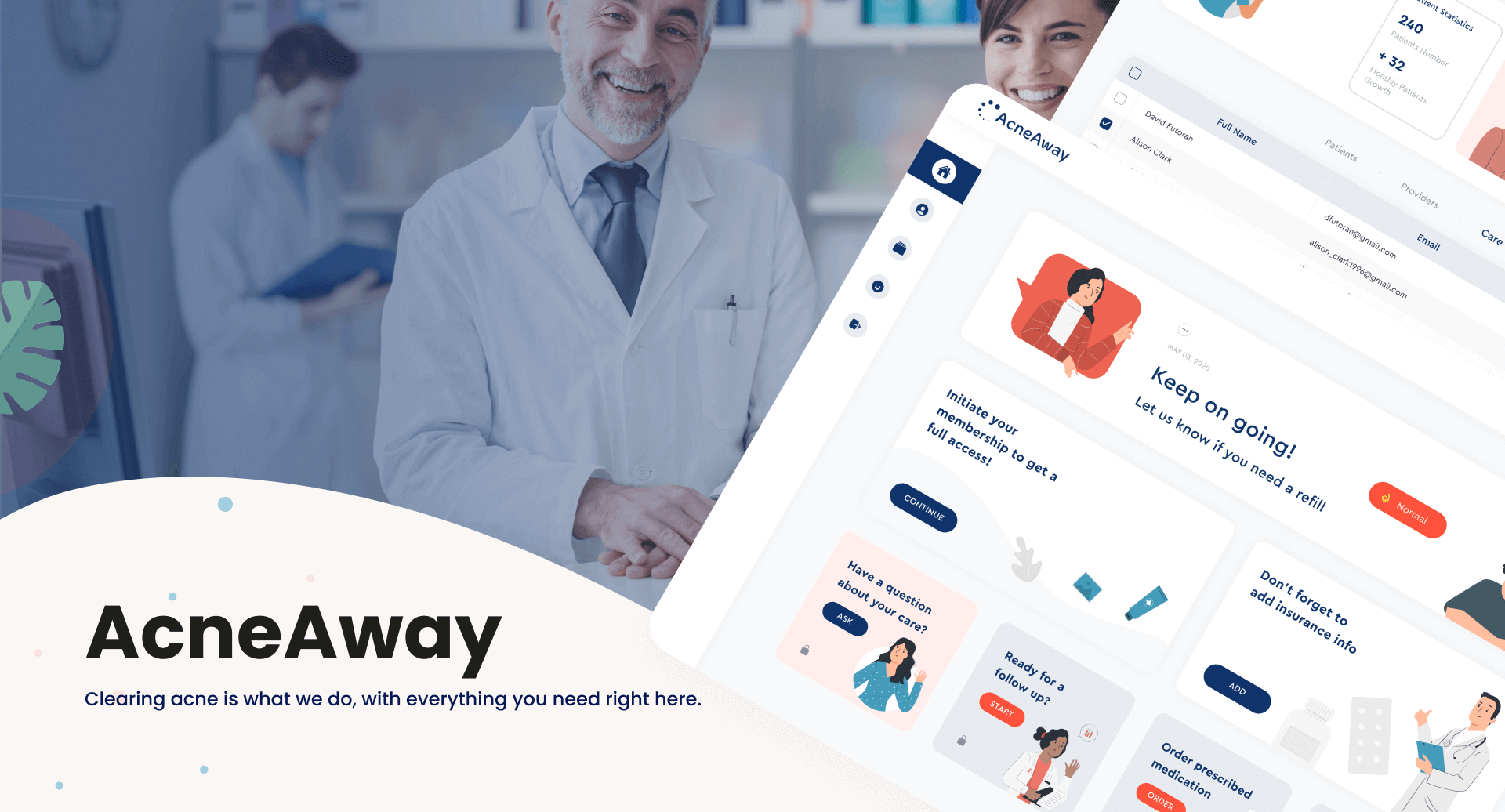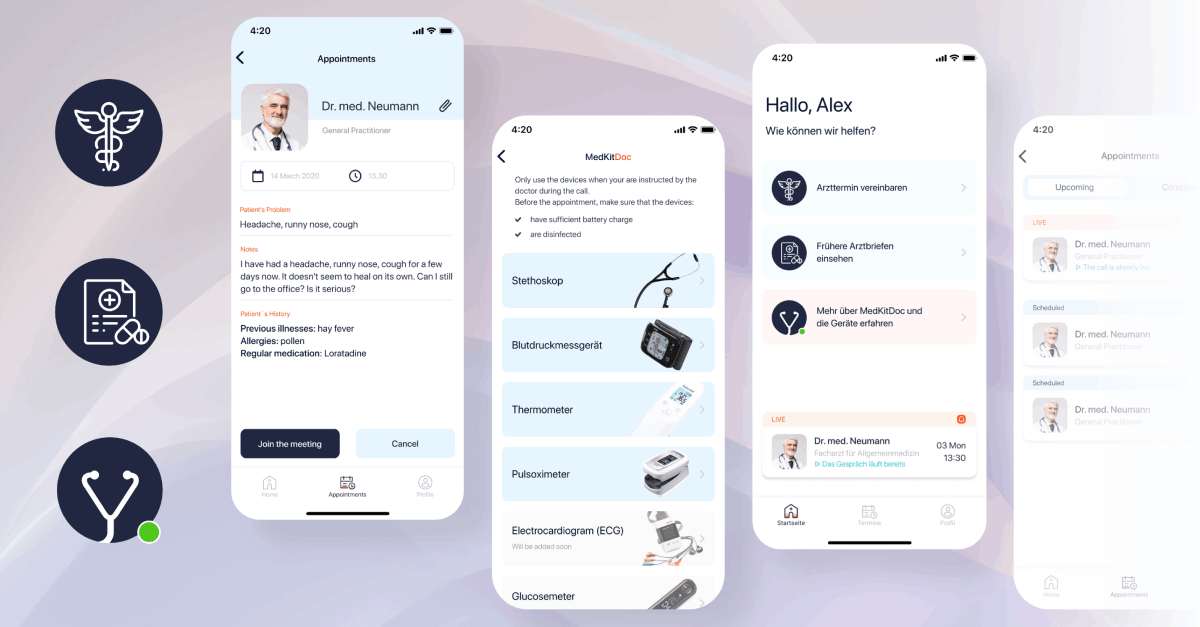Dental practices deal with a heavy flow of patients and data daily; therefore, a customized software solution can help make the workflow seamless and efficient. Dental electronic health records (EHR) have proven to be extremely helpful and effective in digitizing patients’ medical files. The system streamlines decision-making and enhances the experience of patients, medical professionals, and healthcare facilities. Today, EDRs are no longer an option but a necessity, facilitating coordinated and continuous care. In this electronic health records overview, we will cover various other use cases of EHR in dentistry beyond electronic medical records management.
The global dental software market size is expected to exceed $5.04 billion by 2032.
The global dental software market is forecast to grow at a CAGR of 10.90% from 2023 to 2032.
The global electronic health record market is predicted to reach $39.38 billion by 2032.
What Is Dental EHR?
Dental electronic health records (EHR) or electronic dental records (EDR) is a type of EHR used in dental practices. It contains all the health data recorded in a paper chart, including medical history, prescriptions, diagnoses, allergies, treatment progress, lab results, etc.
The software allows dentists to store patients’ electronic medical records, issue invoices, and share the data with other healthcare facilities and systems. The dental electronic health records software also has integrated tools for medical imaging, e-prescription, and dental practice management. An experienced healthcare software development company will advise you on how to create an EMR/EHR software to achieve all your practice’s goals.

10 Key Features of Dental EHR
-
Customizable Dental Templates
Simplify and streamline documentation with customizable templates for various dental cases.
-
Dental and Periodontal Chart
Use intuitive graphical periodontal charts with integrated 3D modeling and individually clickable teeth for monitoring gum and teeth health and entering data regarding the procedures, medications, etc.
-
Documentation
Document visits, prescriptions, and patient medical history, and take progress notes in real time.
-
Built-In Communication Tools
Communicate with your colleagues and exchange health information in real time, minimizing errors and ensuring continuity of care.
-
Interoperability and Device Integration
Use APIs to connect electronic dental records software with medical billing and imaging software for comprehensive treatment and streamlined workflow.
-
E-Prescriptions
Create electronic prescriptions and send them to patients and pharmacies via an e-prescription pad linked with Surescripts or other services.
-
Online Forms
Reduce paperwork and improve patient experience by implementing electronic forms for patient registration, consent, allergies, insurance, etc.
-
Patient Portal
Enhance speed and efficiency by allowing patients or front desk staff to input contact and insurance information and send and receive bills, X-rays, or other documents.
-
Appointment Scheduling
Allow your patients to schedule, reschedule, and cancel appointments online via an updatable electronic calendar.
-
Billing/Claims
Digitalize the process of generating and submitting claims to insurance companies for reimbursement, including billing functions for self-pay patients.

On-Site VS Cloud Dental EHR
-
On-Site Dental EHR
- Higher up-front costs, but lower lifetime costs;
- Requires investing in hardware and licenses;
- Protected from cyber attacks, but vulnerable to internal security threats;
- Customization takes more time, but can be tailored to the clinic’s needs;
- Data is backed up on off-site servers and protected by providers;
- Can be accessed only from the clinic.
-
Cloud Dental EHR
- Lower up-front costs, but higher lifetime costs;
- No need to invest in servers and licenses;
- Exposed to cyber attacks and requires additional security measures;
- Can be quickly customized, but have limited capabilities;
- Dental clinics are responsible for backing up and restoring data;
- Can be accessed from multiple devices.
Need help in choosing between an on-site and cloud-based dental EHR system?
5 Benefits of Integrating EHR into Dental Practices
-
Enhanced Efficiency and Productivity
Dental EHR software streamlines everyday processes, allowing clinic staff to fill in patients’ electronic medical records, dental and periodontal charts, and other documents with just a few clicks. All the needed information, including patient medical history, prescriptions, and insurance eligibility, is stored in one place and can be easily accessed.
This eliminates manual and paperwork, reduces human errors, and saves time and money. Other healthcare app ideas in dentistry include various post-visit tasks, such as billing, submitting claims, referrals, and e-prescription. Electronic health records in dentistry automate routine tasks and optimize the workflow without sacrificing a patient-centered approach.
-
Continuity of Care
EHR dental software allows dentists to share patients’ health data with other medical professionals and institutions to ensure a holistic treatment. In this way, the practitioners are aware of the medication allergies, previous diagnoses, and chronic conditions that may affect the healing process.
Oral health problems can indicate other diseases, infections, or deficiencies, which means all aspects of health must be considered to create an accurate treatment plan. A seamless data exchange ensures continuity of care and improved coordination among doctors.
-
Accelerated Billing and Payment Processes
Integrated billing features streamline medical billing and payments, as all the connected processes, like verifying a patient’s insurance coverage, preparing claims, and claims scrubbing, take place in one software. This reduces errors and speeds up the bill processing, enhancing efficiency and accuracy. Process automation allows practices to cut costs on routine tasks and maximize revenue in the long run. You can analyze your operations, measure financial progress via embedded reporting tools, and see where you need to improve profitability.
-
Improved Data Storage and Management
Dental EHR software provides a convenient centralized repository for fast, easy, and secure access to patients’ medical information. All the data is stored in one place and format, compared to scattered and extensive paper-based medical records. This means that less storage space is needed for EHR systems, and less time is needed to fill them out. Obligatory compliance with regulations and policies, such as HIPAA, protects patients’ sensitive data from theft and tampering. Another way to enhance security is through cloud-based EHR software integration, as the data is stored at the on-site servers and backed up in the cloud.
-
Increased Accuracy and Quality of Treatment
Standardized forms and charts allow dentists to quickly input health data in real time, access the stored information, and make accurate diagnoses. Automated and streamlined processes enable professionals to focus more on patient care rather than administrative tasks.
Diagnostics become more effective as EDR comprises all the needed health information, including electronic medical records, imaging, and prescriptions. Integrated analytical tools assist in predicting possible outcomes and preventing diseases in advance. Dental EHRs implementation minimizes errors and provides continuous and coordinated patient care.
Hire healthcare developers
3 Challenges of Dentistry EHR Implementation
-
Challenge 1. Change Resistance
For decades, dentists have kept paper-based patient records that took up a lot of space and required manual processing. Nevertheless, many dental practices still resist the introduction of EHR due to the fear of the unknown. Doctors might not have enough motivation to adopt new software and modify their traditional workflow.
Dentistries can prepare the personnel for the upcoming changes by holding discussions about adopting new technologies. The dental clinic’s leadership should explain the need for the EDR, how it will change and enhance the usual work process, and organize proper training for smooth software implementation.
-
Challenge 2. High Cost
Integrating dental EHRs can be quite costly, especially for small practices or solo practitioners. The price mainly depends on the software functionality and the mode of implementation – an on-site or a cloud solution.
On-site dental EHR systems generally require significant upfront payment, and the cost can increase if you decide to customize the solution for your business needs. Cloud solutions are provided on a monthly or annual subscription basis. However, in the long run, the final cost can exceed that of an on-site dental EHR.
It’s essential to analyze your needs and work process to select the best option for your dental practice. If your practice is focused on therapy, standard functionality of off-the-shelf solutions will be enough. However, you may need a custom dental EHR if you go beyond that and deal with oral surgery or pediatric oral health.
Mid and small dental practices with modest financial resources will be comfortable with cheaper solutions offering basic functionalities and features. Meanwhile, large dental clinics providing various services can afford multifunctional EHR with additional integrated modules. If you’re unsure about what type of EDR to choose, consult a trusted company offering healthcare software development services.
-
Challenge 3. The EDR-Associated Burnout
Many dentists worry that implementing EHR dental software will increase their workload and that filling out the EDR will force them to work overtime. This can happen if the software is deployed without any staff training and they are learning how to use the EHR systems for dentists on the go.
To ensure smooth and efficient implementation of electronic health records in dentistry, the clinic management and the software provider should organize initial training for all the staff using the software. This will speed up the process of working with the electronic dental records software and minimize mistakes.
For decades, dentists have kept paper-based patient records that took up a lot of space and required manual processing. Nevertheless, many dental practices still resist the introduction of EHR due to the fear of the unknown. Doctors might not have enough motivation to adopt new software and modify their traditional workflow.
Dentistries can prepare the personnel for the upcoming changes by holding discussions about adopting new technologies. The dental clinic’s leadership should explain the need for the EDR, how it will change and enhance the usual work process, and organize proper training for smooth software implementation.

How Can Interexy Help?
Interexy is a web & mobile telehealth app development company and a leading healthcare developer. We provide healthcare IT consulting services and specialize in healthcare web development for private clinics and healthcare organizations seeking ways to improve efficiency and productivity. Our developers are experienced in complying with major healthcare regulations and policies, such as HIPAA, HL7, and XDS/XDS-I, and are committed to providing you with the best e-prescribing software for dentists.
Dental EHR Software Development by Interexy
Final Thoughts
Dental EHRs help your clinic work efficiently and productively, grow your dental practice, and optimize your workflow. The software use cases extend far beyond medical health records management; they also accelerate billing and improve the quality and accuracy of treatment. EDRs increase revenue and enhance patient and dentist experience in the long run.
Explore our Healthcare expertise and find out how Interexy can help you!
Book a call with our expertsFAQs
-
What is EHR dental?
Dental EHR refers to electronic health records used by dental care professionals. They generally include a patient’s medical history, diagnoses, allergies, prescriptions, lab results, etc. The software can also have integrated medical billing, imaging, e-prescription, and dental practice management features.
-
Why is EMR/EHR important to the dental office?
Besides the convenient medical data storage and management, dental EHR offers improved efficiency and productivity of the clinic personnel. The software also speeds up billing and payment processes and automates everyday operations. Most importantly, dental electronic health records software enhances the quality of treatment and continuity of care.
-
When is dental EHR going to be pushed through?
Even though dental EHR is growing in popularity among private clinics, its global use could be expected when all limitations and challenges are solved.
Written by
Tsimashenka Viacheslau / Full-stack developer
“I am a full-stack developer with over 6 years of expertise in FinTech, HealthTech, and Blockchain. With a proven track record,excels in both front-end and back-end development,contributing innovative solutions to advanceprojects in these dynamic industries”.









